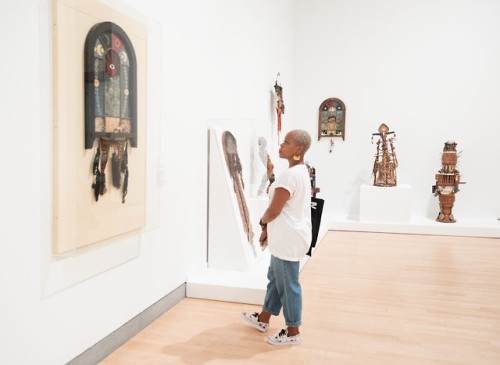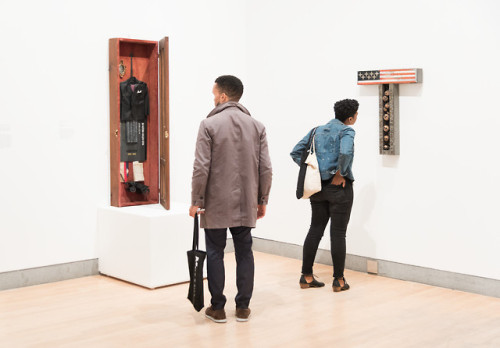The Black Power Movement in Los Angeles was heavily influenced by historical patterns of discriminat
The Black Power Movement in Los Angeles was heavily influenced by historical patterns of discrimination against African Americans and the confrontation between state and people that happened as a result. Artists such as Noah Purifoy and John Outterbridge repurposed street detritus from the Watts Rebellion of 1965 to make politically charged assemblage works, making beauty out of modern day ruins. Betye Saar used found objects to recreate altars and other spiritual motifs, and Melvin Edwards contorted welded metal to make sculptures that reflected the country’s history of racial violence. Overall, the strategy of making do with what one has is not solely modernist practice but can be traced to historical necessity due to sparse resources within the community, bringing forward an innate sense of creativity and mastery.Posted by Emoni BarakaInstallation view, Soul of a Nation: Art in the Age of Black Power, Brooklyn Museum, September 14, 2018–February 3, 2019. (Photos Jonathan Dorado) -- source link
Tumblr Blog : brooklynmuseum.tumblr.com
#soulofanationbkm#los angeles#black power#art#artists#art history#assemblage#sculpture#discrimination#noah purifoy#john outterbridge#detritus#watts rebellion#political#betye saar#ruins#spiritual#melvin edwards#racial violence#modernist#creativity#mastery

